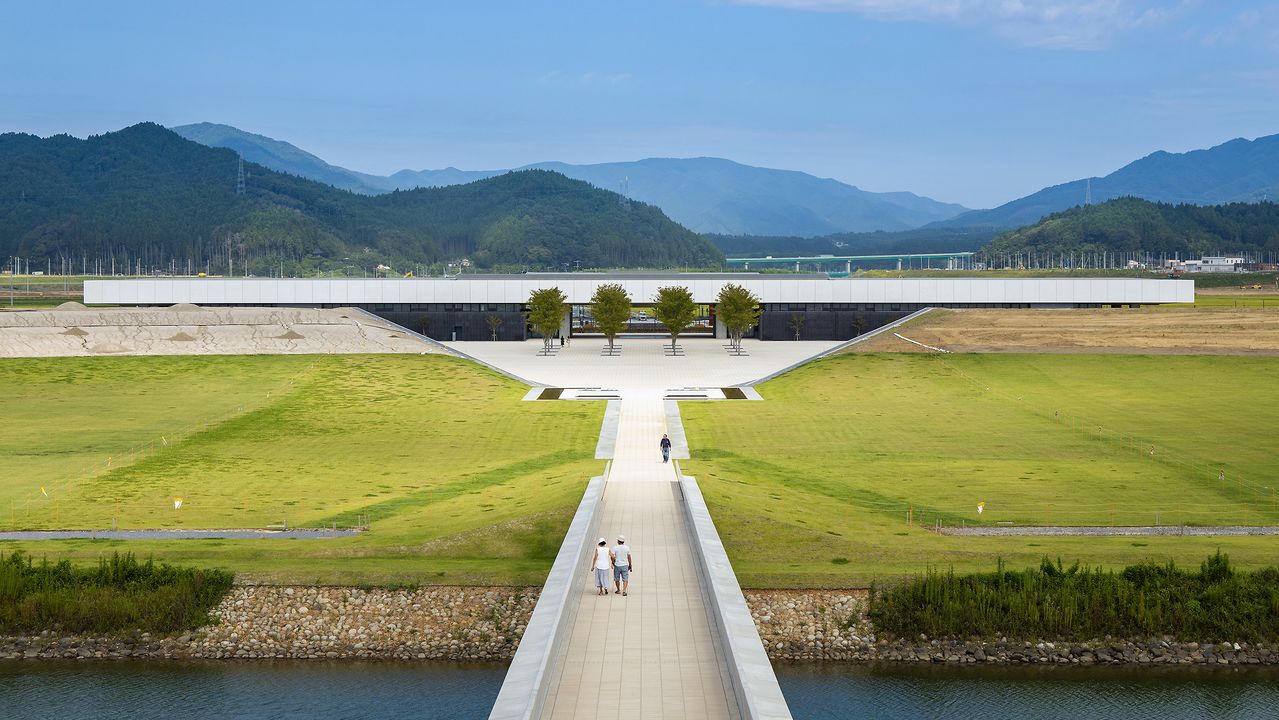
The Iwate Tsunami Memorial Museum: Preserving the Past and Protecting Lives by Passing down the Lessons of Disaster
Guideto Japan
Disaster Travel- English
- 日本語
- 简体字
- 繁體字
- Français
- Español
- العربية
- Русский
The shoreline of Rikuzentakata was once the site of the Takata Matsubara, a scenic stand of 70,000 pine trees stretching along Hirota Bay. The grove was planted some 350 years ago to protect the town from winds and waves as well as the tsunami that occasionally assaulted the coastline. Locals tended to the trees until the unprecedented tsunami of the Great East Japan Earthquake swept all but one of the pines away.
The lone surviving tree at the western end of the bay very quickly became famous throughout Japan as a symbol of reconstruction and was dubbed the “miracle pine.” Although it too eventually succumbed to exposure to salt water, it was preserved and now stands as a monument to the disaster.
The shoreline extending east from the miracle pine is currently being made into the Takata Matsubara Tsunami Reconstruction Memorial Park. Atop the newly constructed 12.5-meter-high seawall is a large stand where visitors can place flowers to commemorate the victims of the tsunami. On the shore side of the seawall work is underway to restore the beach and replant the grove of pine trees along a 1.2-kilometer stretch of the shoreline.
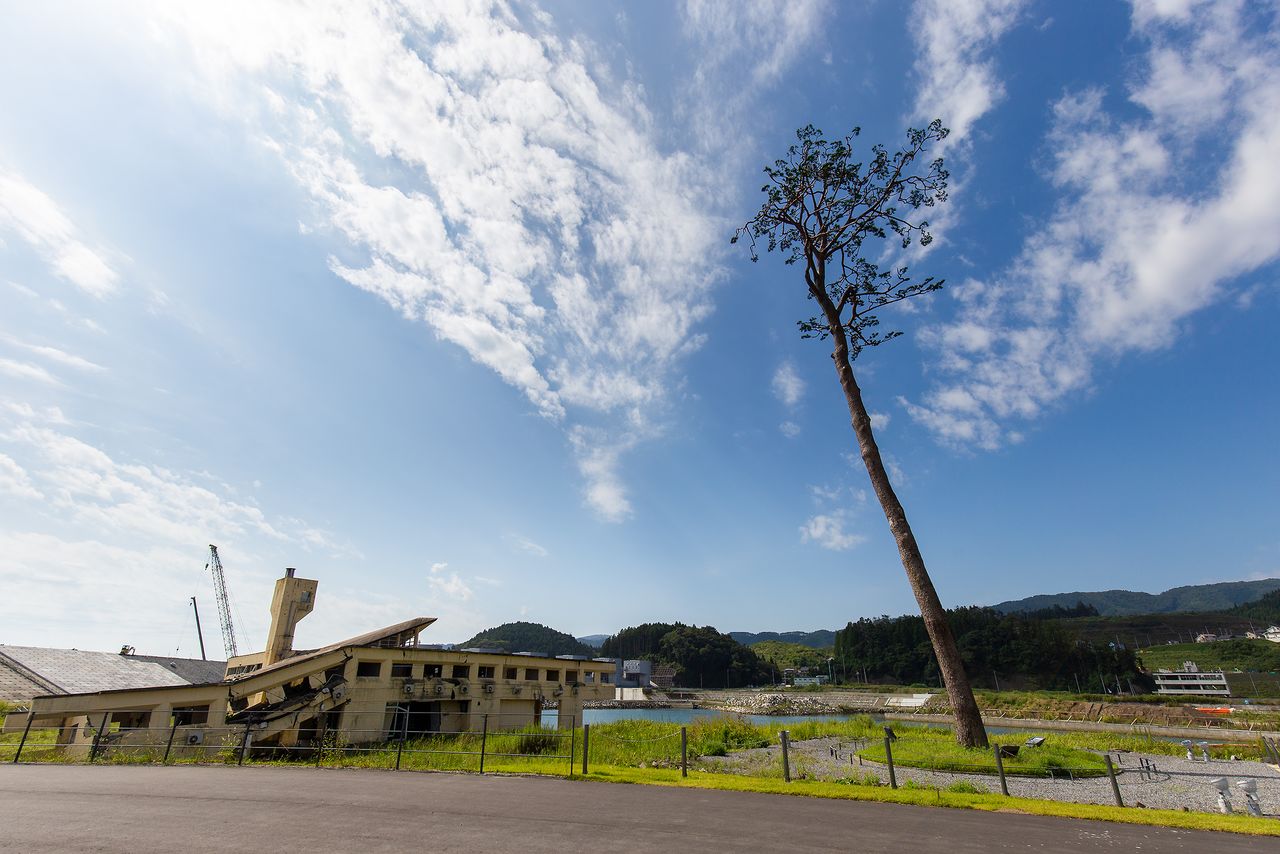
The miracle pine stands in the grounds of the Rikuzentakata Youth Hostel. Destroyed in the tsunami, the hostel is thought to have shielded the pine tree.

A viewpoint atop the seawall looks onto Hirota Bay. The peaceful waters give no indication of the great tsunami that swept inland.
Lessons of the Tsunami
The Iwate Tsunami Memorial Museum stands at the entrance to the new park. The museum commemorates the catastrophe and communicates to visitors the dangers of natural disasters. The facility has some 150 items on display chronicling the March 2011 disaster along with exhibits presenting in detail the history of tsunamis along the Sanriku coast, the mechanisms of tidal waves, and the devastation they can cause.
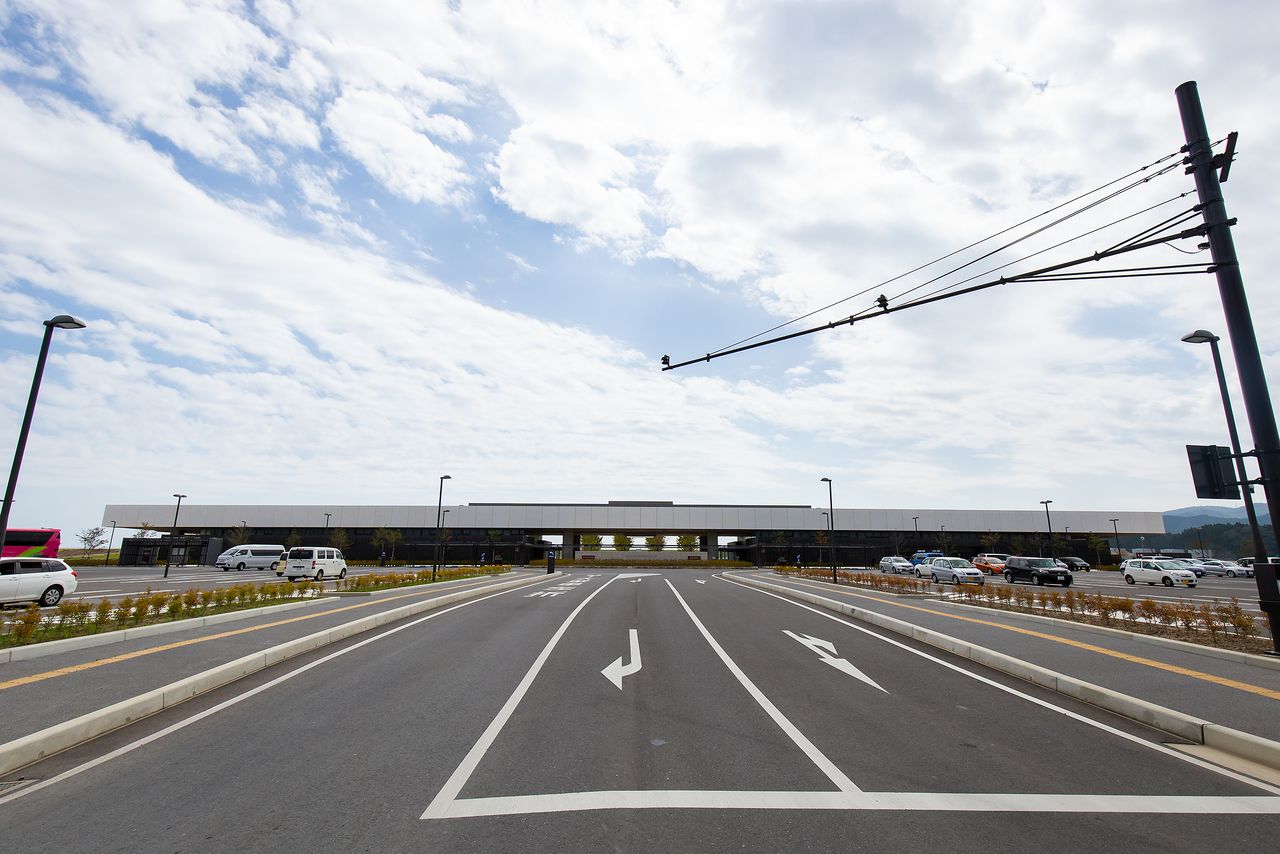
The Iwate Tsunami Memorial Museum viewed from the parking lot of the Takata Matsubara Tsunami Reconstruction Memorial Park.
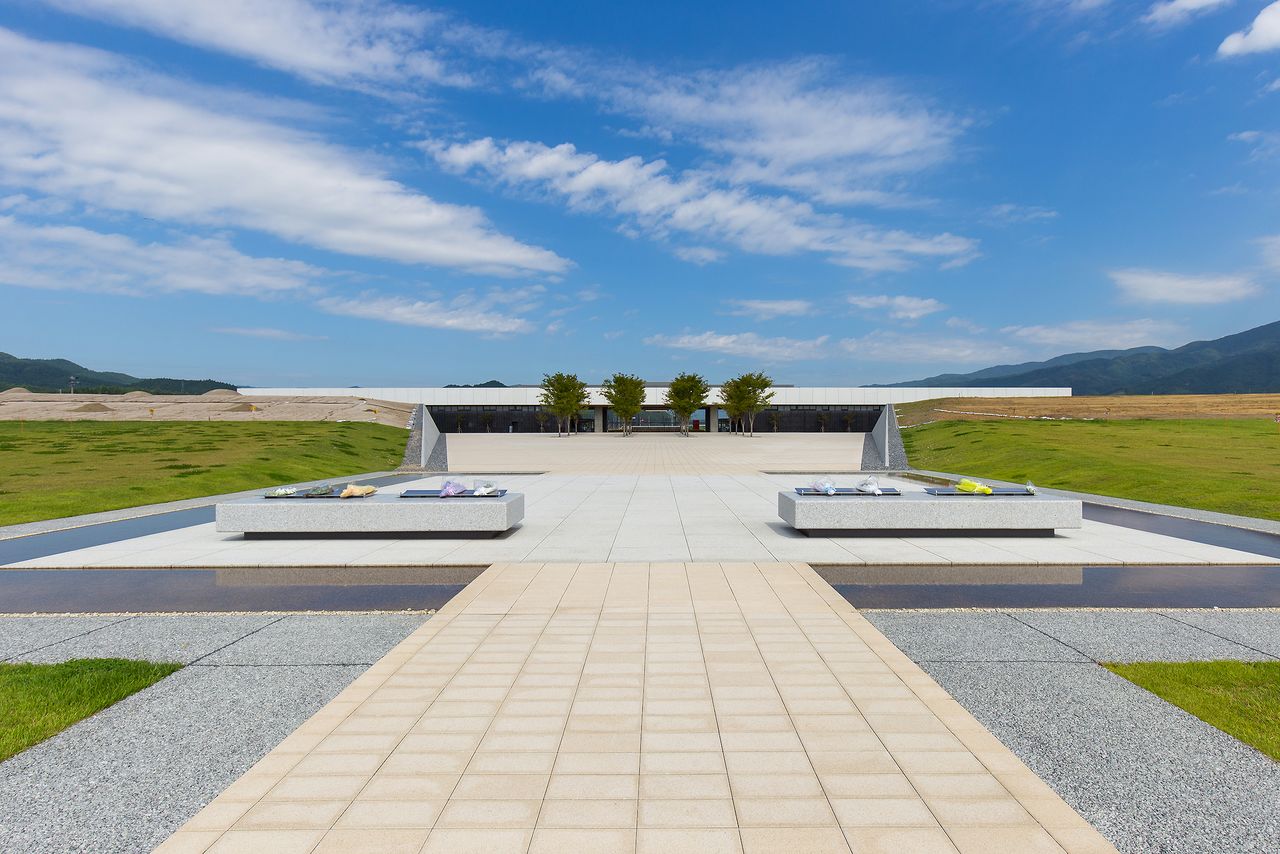
Platforms for offering flowers adorn the Tsuitō no hiroba plaza.
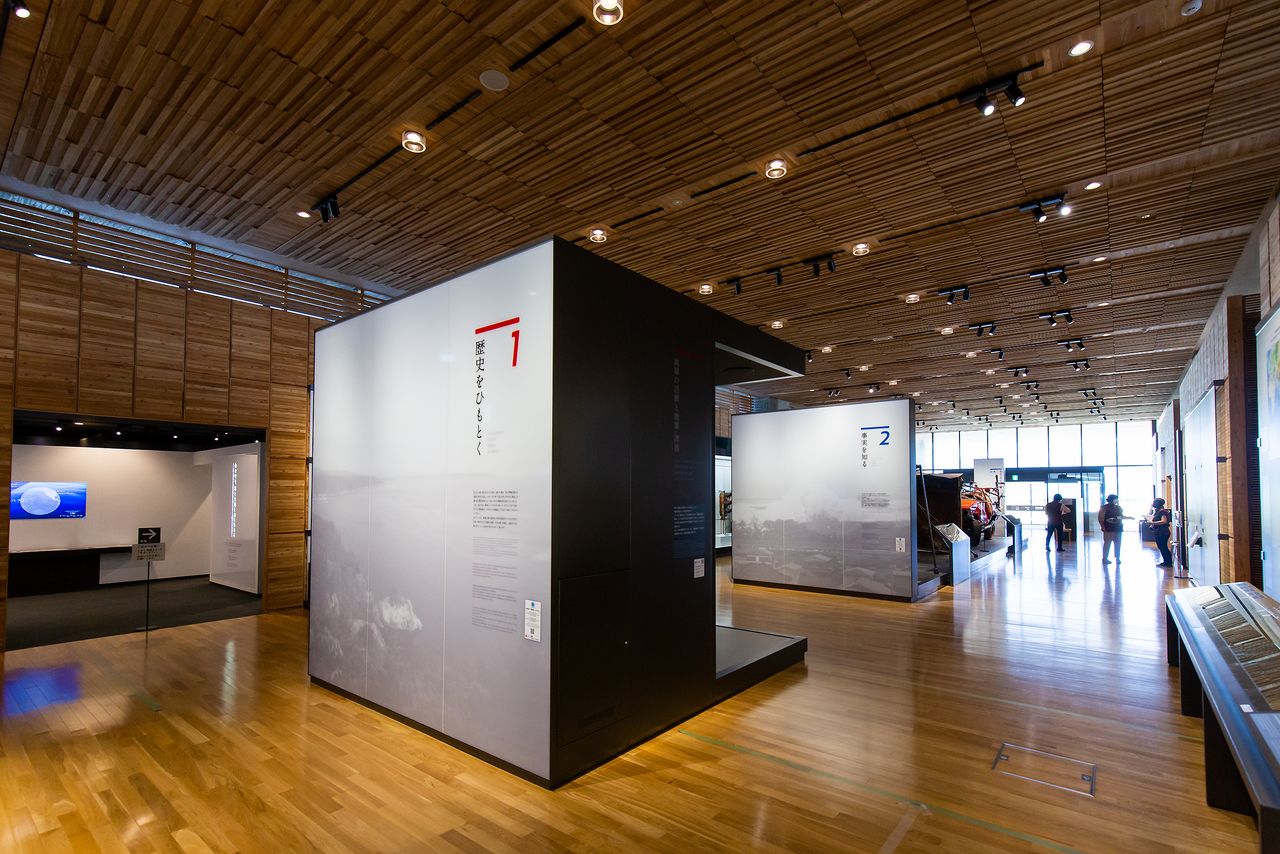
The museum’s wooden interior provides a calm and quiet atmosphere.
The museum is divided into four zones. The first, “Tracing History,” presents a chronology and artifacts of past tsunami along the Sanriku coast. Visitors passing through the exhibit can continue on to a theater showing a short, informative film featuring the hamlet of Aneyoshi in the neighboring city of Miyako. The village was spared the 2011 tsunami because it stands above ancient stone markers showing the height of a long-forgotten tidal wave and which bear a warning to residents not to build their homes below the boundary. The Takata Matsubara pine grove is another example of how people learned from the tsunamis of the past and conveyed the information to future generations.
The museum’s deputy director Kumagai Masanori explains that Iwate Prefecture has long made disaster mitigation a priority. “Although there were many deaths in the central part of the town, all the students at our schools remained safe,” he says. “We need to continue sharing information about the disaster to educate society about nature’s destructive forces and heighten awareness of the need to be prepared.”
Rikuzentakata was hard hit by the 2011 tsunami. More than 7% of the city’s population, some 1,700 people, were killed or swept away, never to be found. The high toll, which likely would have been even higher if municipal authorities had not heeded lessons of the past in putting disaster management measure in place, speaks to the size and terrible force of the tsunami.
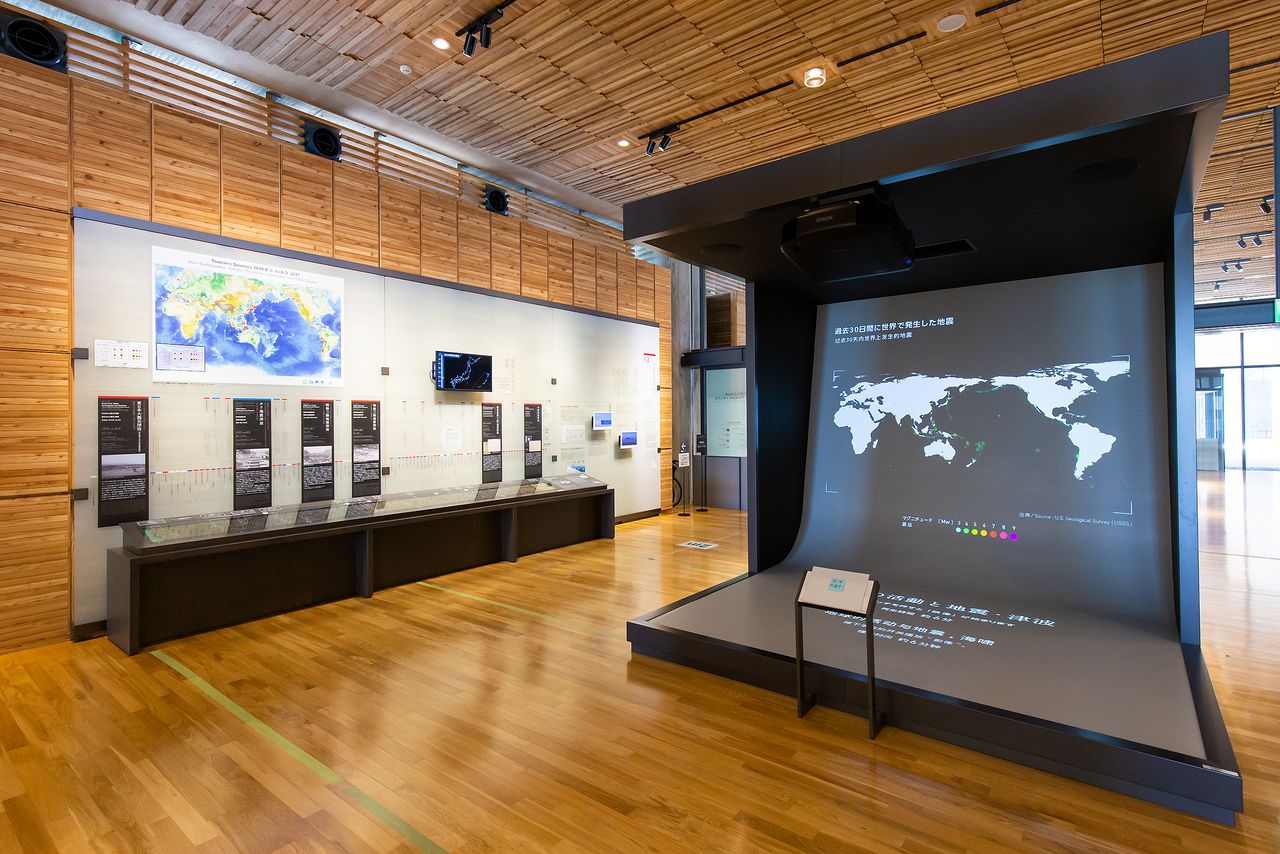
The display to the left shows the chronology of past tsunamis and the geological strata along the Sanriku coast. The screen to the right shows recent earthquakes around the world.

A guidance film introduces the museum and its exhibits.
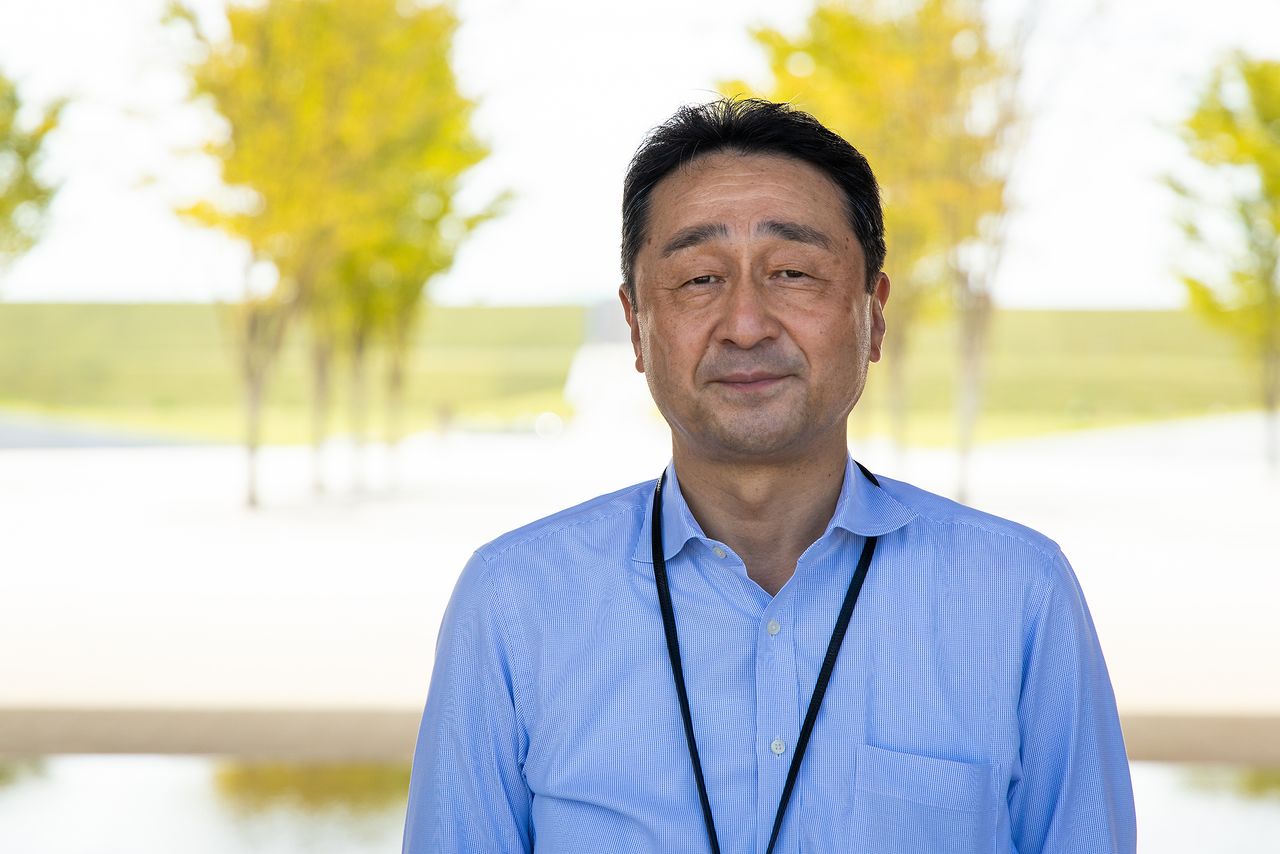
Museum deputy director Kumagai Masanori oversees the facility’s daily operations.
Prompt Evacuation is the Key
Zone 2, “Learning the facts,” emphasizes the incredible extent of the 2011 devastation through videos of the aftermath, artifacts, and the voices of the victims. The exhibit includes items like a twisted bus stop post, buckled train station signs, bridge girders floating in a tangle of debris, and a crumpled firetruck.
Firefighters involved in evacuation efforts as well as those who struggled to close the flood gates were among the victims of the tsunami. Kumagai laments the loss of these first responders. “People acting to save others should never become victims themselves,” he says. However, he hopes the tragic loss of life will serve as an important lesson in responding to disaster. He stresses that as floods and landslides caused by heavy rains grow more frequent, residents in areas vulnerable to disaster should evacuate quickly when warnings are issued. He stresses that people waiting to the last minute to evacuate or choosing to “ride the disaster out” puts others in danger.
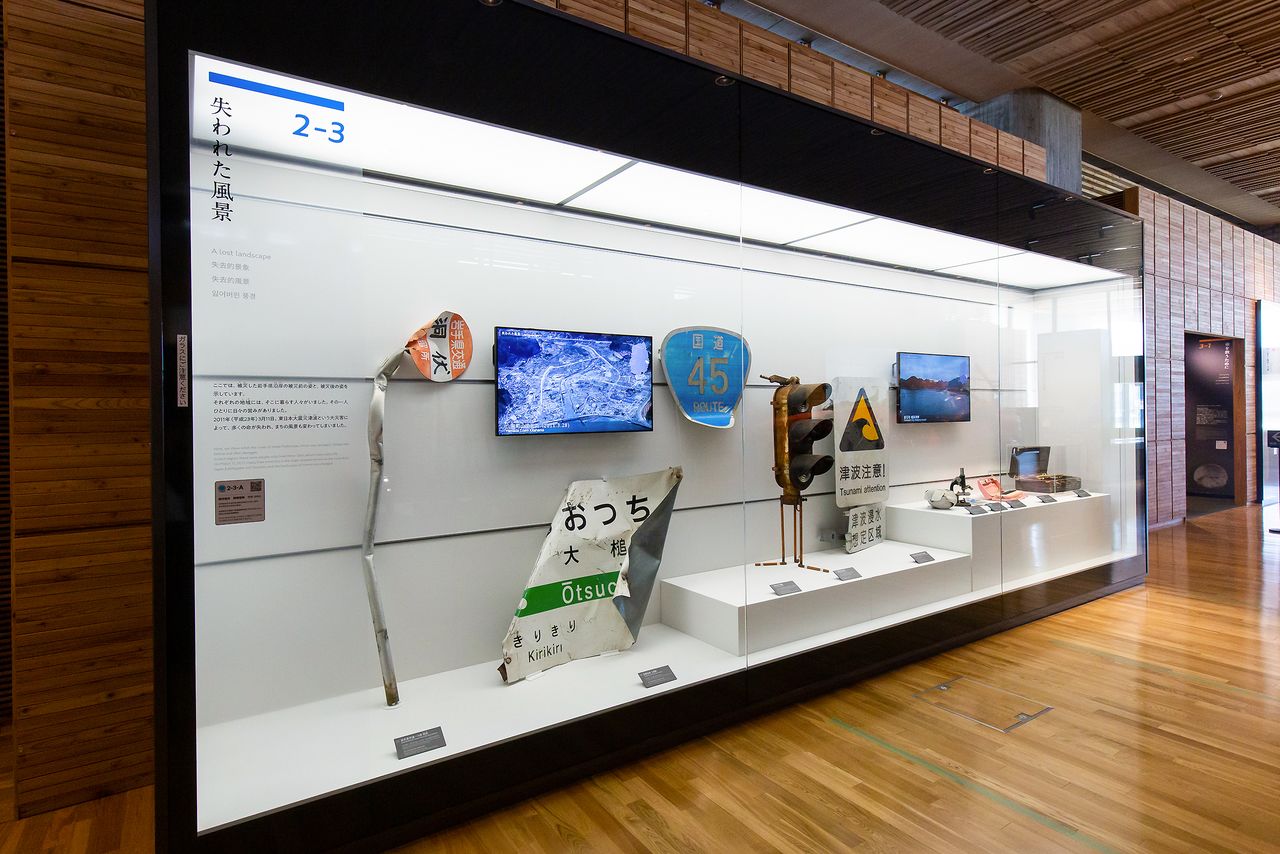
Artifacts from the disaster and scenes from before and after the tsunami.
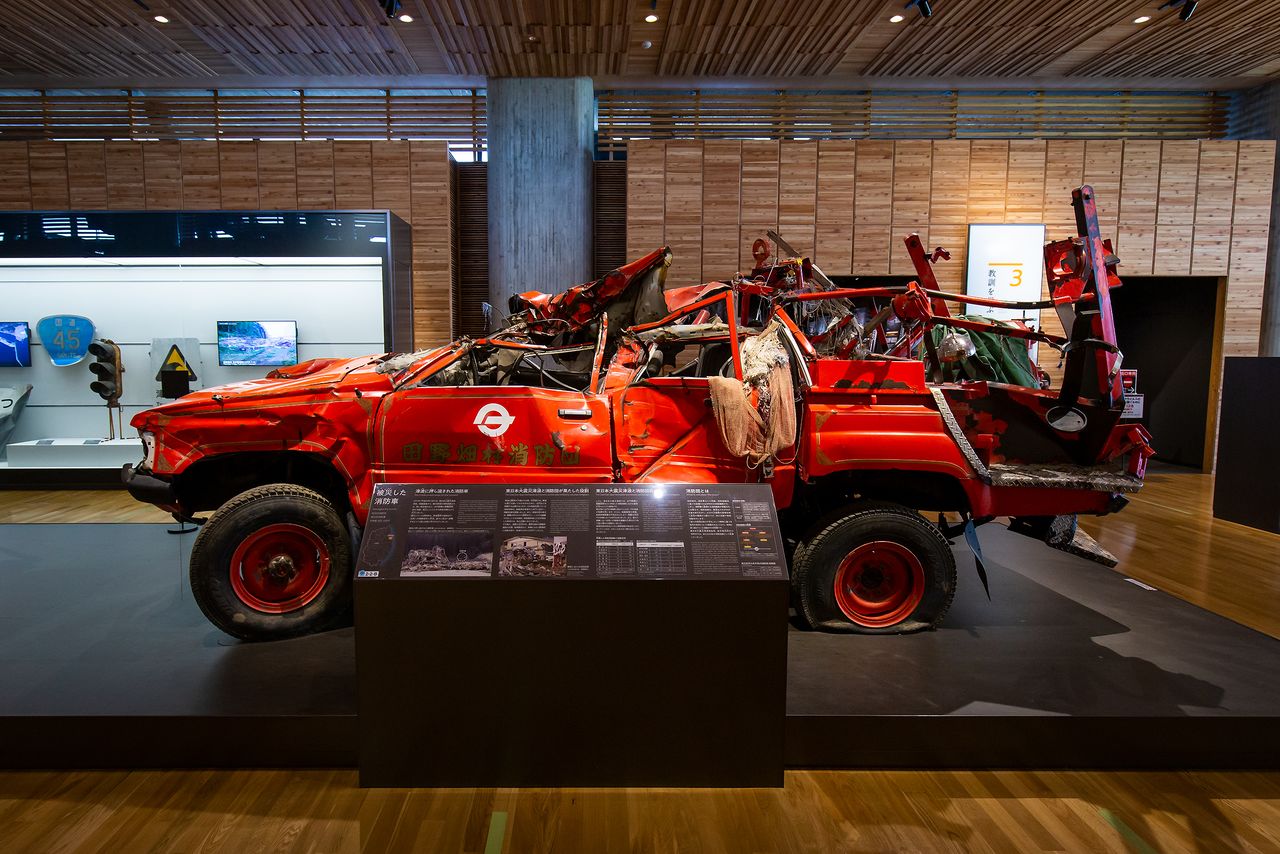
A mangled firetruck from the village of Tanohata.
Zone 3, “Learning lessons,” starts the facility’s permanent exhibits. Here are displayed photos, charts, and graphs detailing the conditions at the time of the disaster and life in the evacuation centers. The intent is to share information on how lives can be saved in the wake of a disaster. The Tōhoku Regional Bureau of the Ministry of Land, Infrastructure, Transport, and Tourism was quick to clear roads for the transport of relief personnel and supplies after the tsunami, and the actual bureau office that oversaw these activities is on display as a monument to the tense and fevered atmosphere at the time.
During our visit to the museum we encountered a group of elementary school children listening intently to their guide explain how that after nine and a half years, new generations are emerging who have no knowledge of the disaster. Most children in the upper grades of elementary school do not remember it at all, and even among junior high school students, only a few can recall the events of that fateful day.
Zone 4, “Moving toward reconstruction together,” focuses on the support the area received from around Japan and the world as well as conveying the efforts of disaster-stricken areas to recover and move past the Great East Japan Earthquake and devastating tsunami.
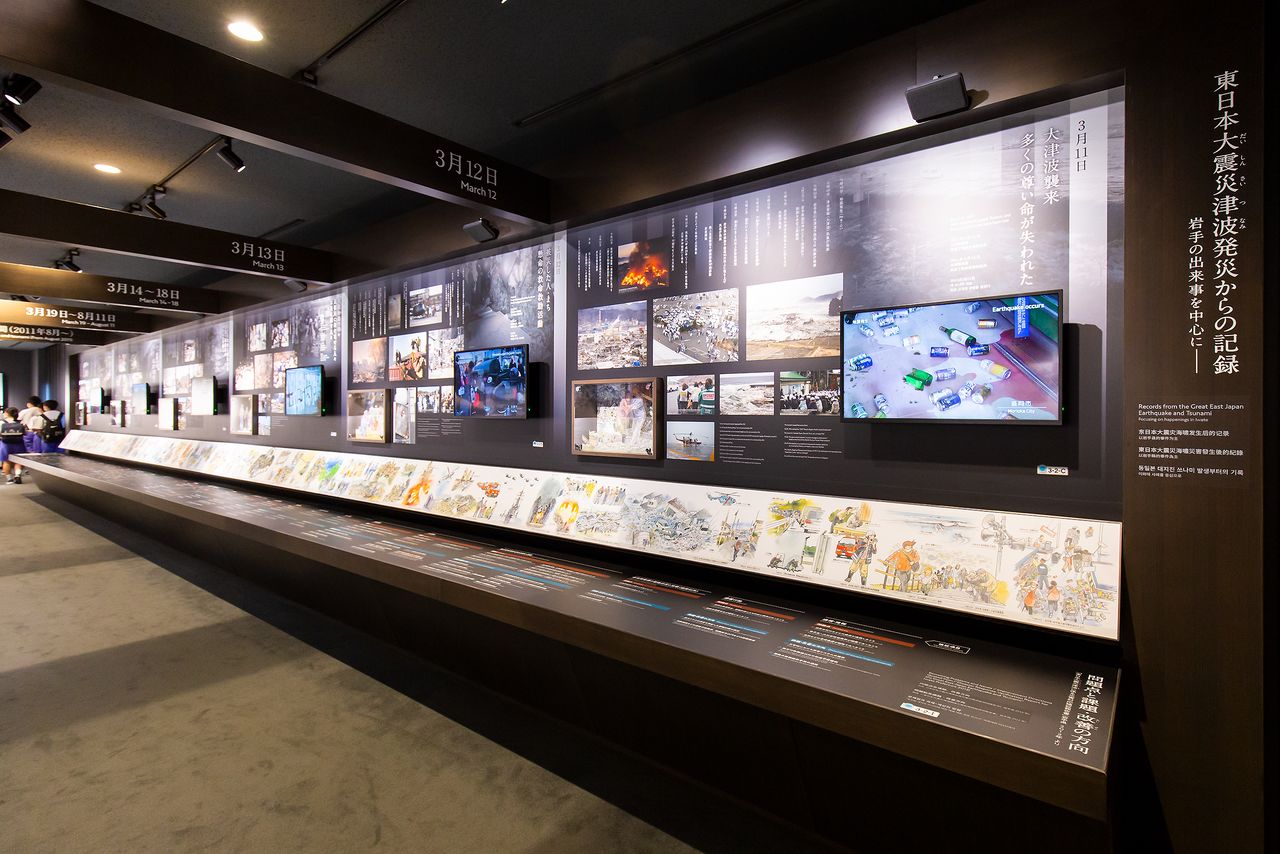
A panel traces events as they occurred at the time of the earthquake and tsunami and highlights various problems that were faced.
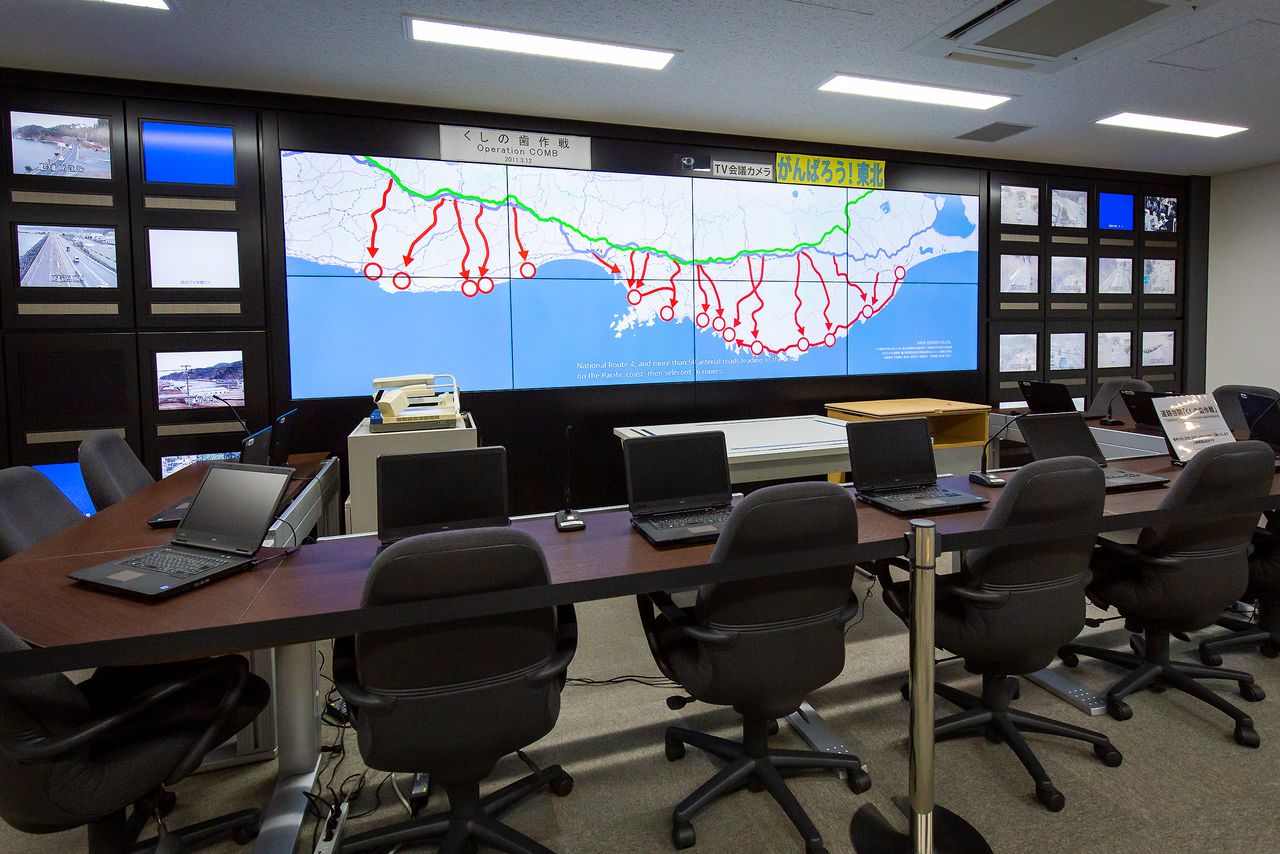
The control room where authorities oversaw evacuation and relief efforts in the tense days following the disaster.
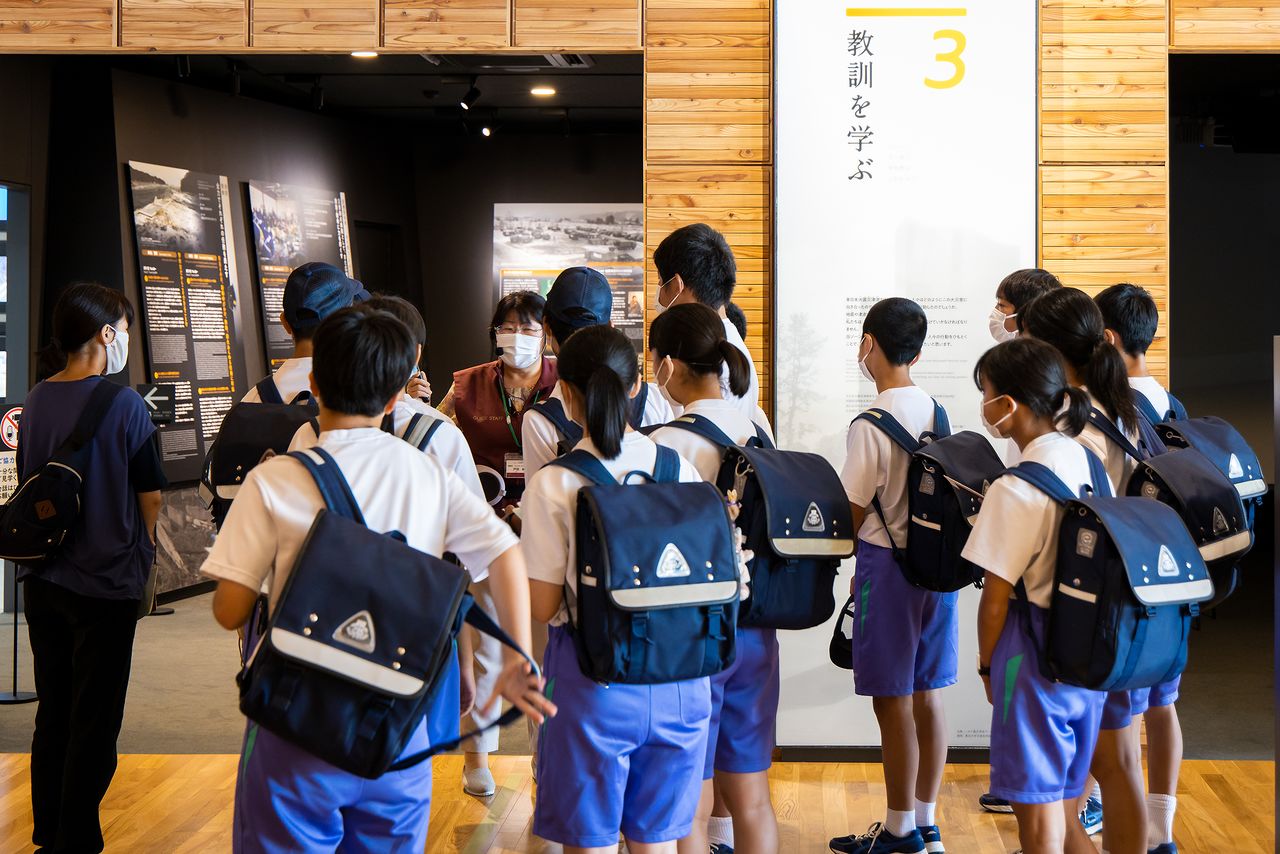
School children listen to a guide describing how people worked to overcome the devastation.
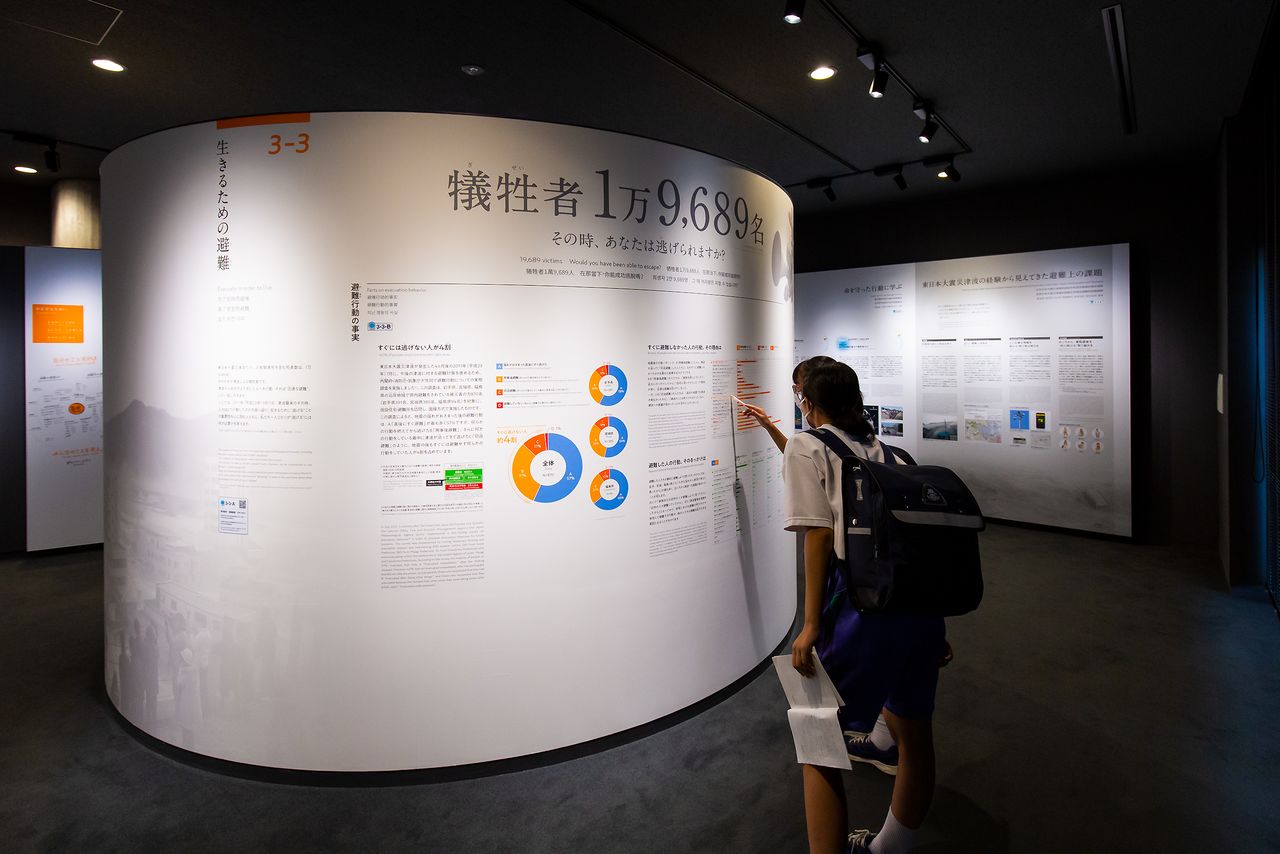
Junior high school students read the text of one of the displays.
An International Center for Tsunami Education
The museum frequently welcomes large groups who also come to browse the selection at the nearby Michi no Eki Takata Matsubara, a “roadside station” offering a variety of local products. Since opening in September 2019, the museum has had more than 200,000 visitors, an impressive figure given that it had to close its doors for a time due to the COVID-19 pandemic. However, Kumagai insists that he would like to see that figure increase. “Many younger people have no idea of the disaster,” he explains. “We would also like more visitors from overseas.”
The museum aims to become an international center for tsunami education. Displays have multilingual signage in English, Chinese (simplified and traditional), and Korean. There are also fulltime English- and Chinese-speaking guides. At the time of the 2019 Rugby World Cup, many foreigners who had come to see the games in nearby Kamaishi stopped by the museum. Kumagai looks forward to the return of overseas visitors once the pandemic ends.
Work is currently underway to restore damaged buildings as memorials to the disaster, including the old Michi no Eki Tapic 45 and the former Kesen Junior High School. The plan is to create a comprehensive facility where visitors can reflect on the human toll of the disaster at the flower dedication stand overlooking the sea, sense the enormity of the tsunami by walking around the miracle pine, and learn about the importance of disaster mitigation at the museum. In addition, visitors will be able to enjoy local seafood products at the adjacent Michi no Eki Takata Matsubara and purchase regional gourmet items.
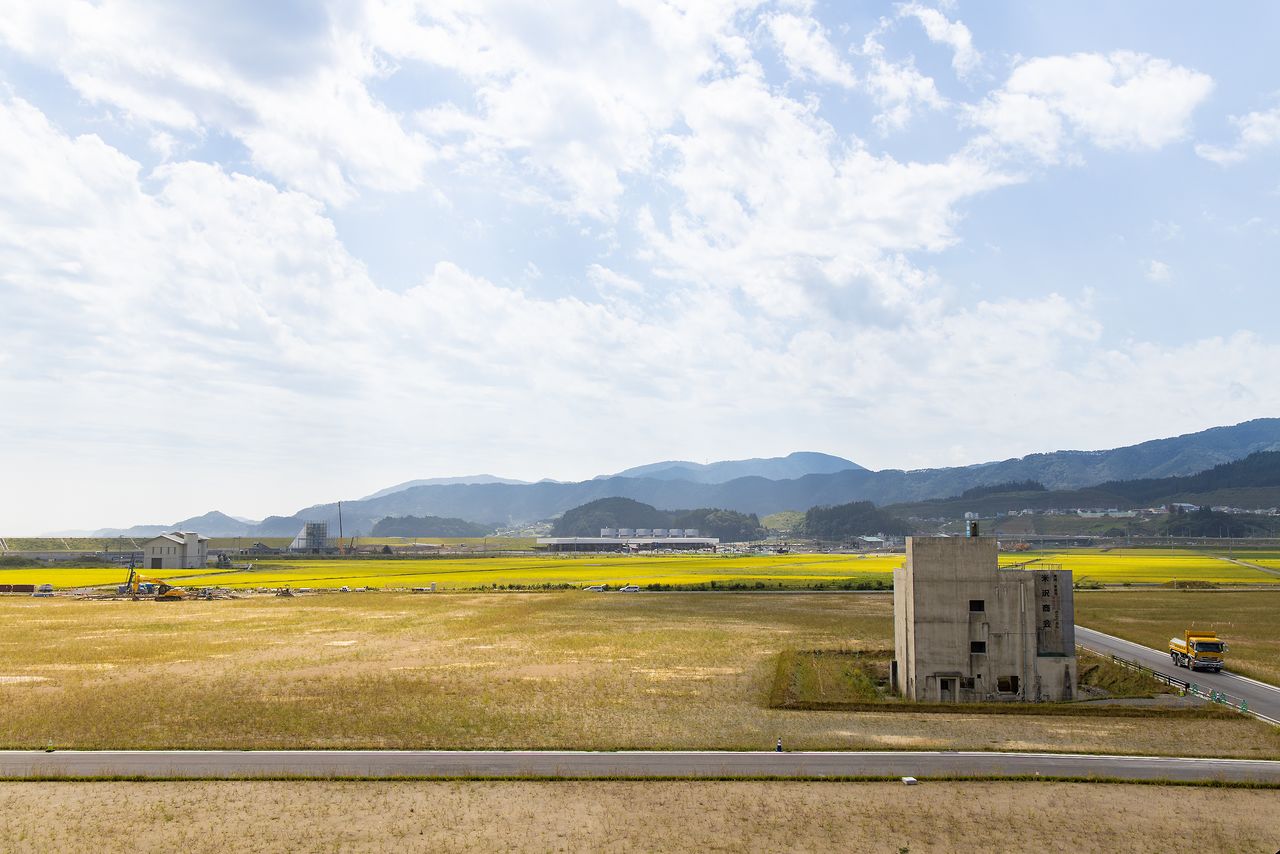
The Iwate Tsunami Memorial Museum, center, seen from a distance. The surrounding area remains largely bare, except for a handful of surviving buildings.
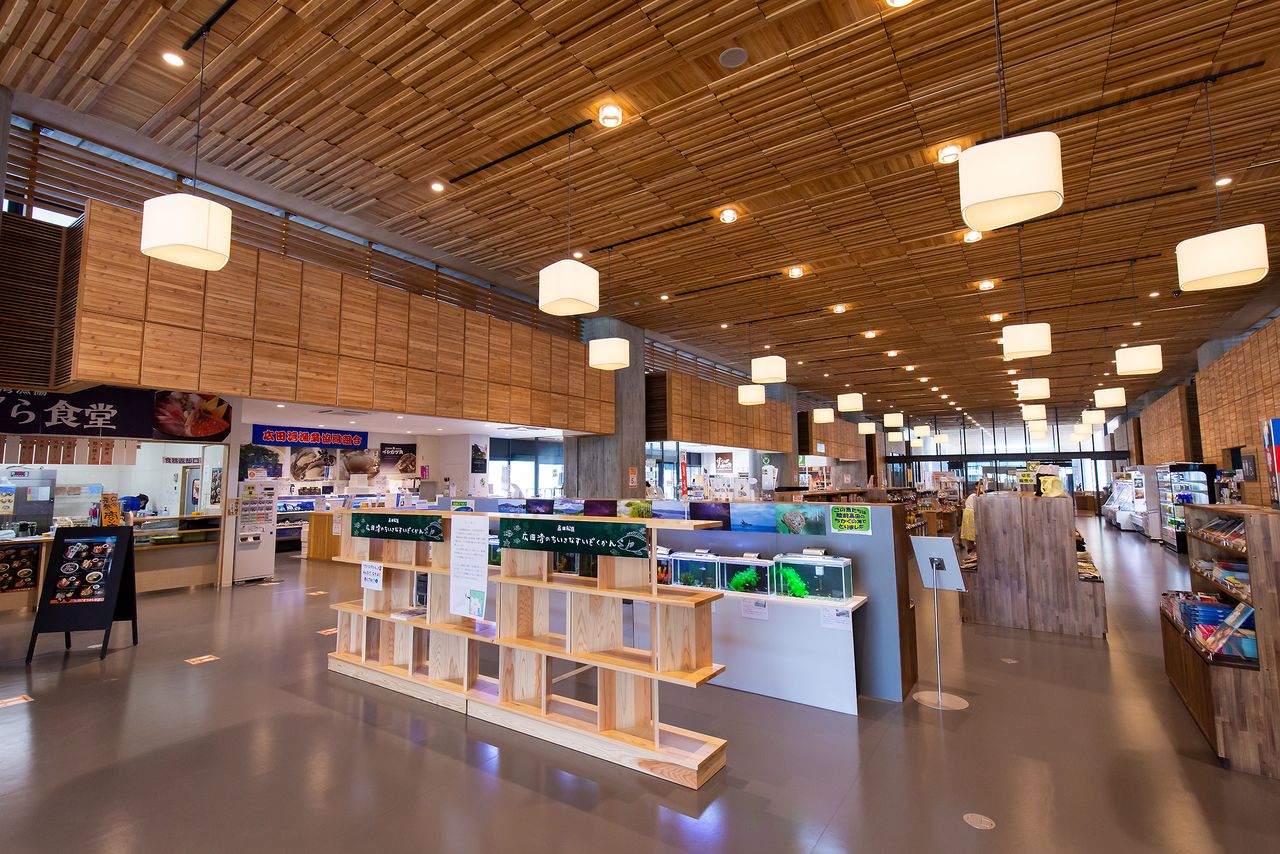
Inside the Michi no Eki Takata Matsubara. The facility is part of Zone 4 of the museum.
Iwate Tsunami Memorial Museum
- Address: 180 Dotekage, Kesen-chō, Rikuzentakata, Iwate Prefecture
- Hours: 9:00 am to 5:00 pm (last admission at 4:30 pm)
- Closed: December 29‒January 3
- Admission is free
- Getting there: From JR Kesennuma Station take the JR Ōfunato Bus Rapid Transit Line and disembark at Kiseki no Ipponmatsu bus stop (about 30 minutes)
(Originally published in Japanese. Interviews, text, and photos by Nippon.com. Banner photo: The Iwate Tsunami Memorial Museum seen from the seawall.)